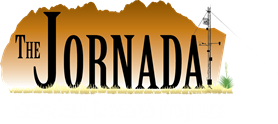| Title | Fine-Resolution Repeat Topographic Surveying of Dryland Landscapes Using UAS-Based Structure-from-Motion Photogrammetry: Assessing Accuracy and Precision against Traditional Ground-Based Erosion Measurements |
| Publication Type | Journal Article |
| Year of Publication | 2017 |
| Authors | Gillan JK, Karl JW, Elaksher A, Duni D |
| Journal | Remote Sensing |
| Volume | 9:437 |
| Date Published | 05/2017 |
| ARIS Log Number | 336637 |
| Abstract | Structure-from-motion (SfM) photogrammetry from unmanned aircraft system (UAS) imagery is an emerging tool for repeat topographic surveying of dryland erosion. These methods are particularly appealing due to the ability to cover large landscapes compared to field methods and at reduced costs and higher spatial resolution compared to airborne laser scanning. However, a systematic comparison between aerial SfM and ground-based methods at multiple points in time has not been investigated. Here we compare the measurement of topographic profiles between erosion bridges and very-high resolution digital elevation models (DEMs) reconstructed with SfM methods from a fixed-wing UAS. In addition to accuracy, we investigated the repeatability of the DEMs which determined the level of detectable change in a survey time-series. Finally, we tested the effect of ground control point (GCP) spacing and quantity on accuracy and precision of the DEMs. We found strong vertical agreement (accuracy) between the methods and virtually no differences using 12 GCPs (RMSE 2.9 cm) and 3 GCPs (RMSE 3.0 cm) to reconstruct DEMs. Vertical repeatability was found to have RMSE 2.7 cm using 12 GCPs and RMSE 2.8 cm using 3 GCPs. The results from repeat UAS imagery, SfM processing, and strong agreement and precision compared with ground-based measures here suggests these technologies can help increase our understanding of soil loss patterns over large landscapes. Applications of this method could include unpaved road network monitoring, compliance monitoring for oil and gas exploration and development, pipeline installation, and other land management challenges. |
| URL | files/bibliography/17-028.pdf |
| DOI | 10.3390/rs9050437 |


